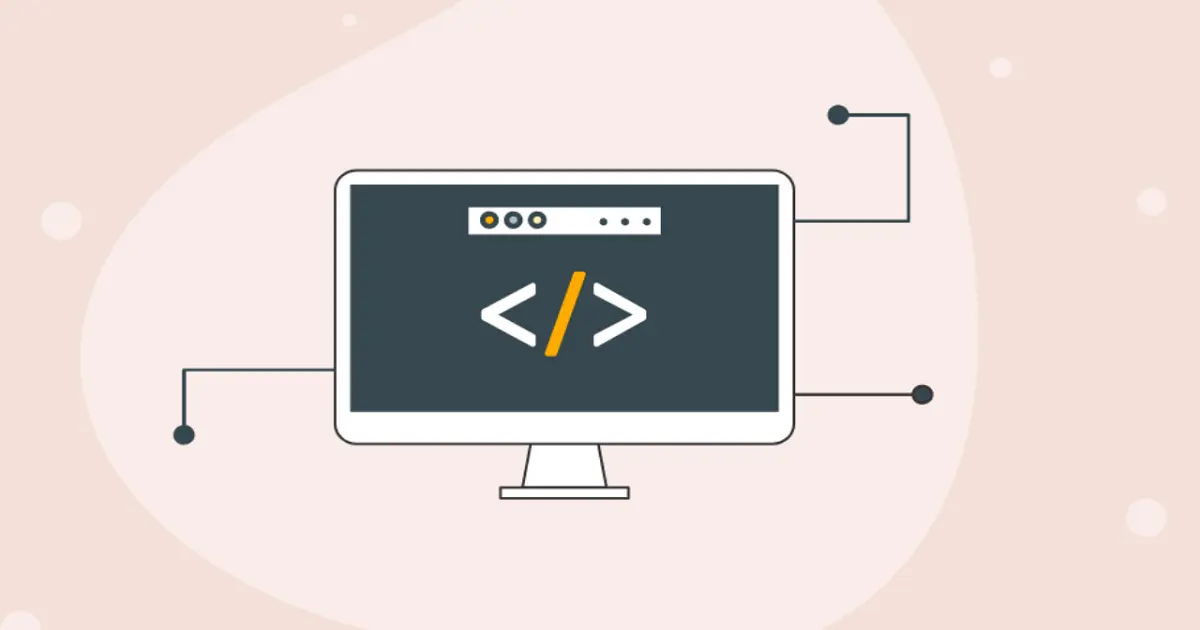Programming is the process of creating instructions that a computer can execute to perform a specific task. Programming languages are the tools that programmers use to communicate with computers and create programs. There are many different programming languages, each with its syntax, features, and applications. In this article, we will explore some of the basics of programming language as well as some of the most popular ones in use today.
What is a Program?
You can tell a computer what to do by writing a program. A program is like a recipe that has steps for the computer to follow. You can use different languages to write a program, but the computer needs to understand it. To make the computer understand your program, you can use a compiler or an interpreter. A compiler changes your program from words to code that the computer can run. An interpreter runs your program directly from words without changing it to code.
Data Types
Another fundamental concept in programming is the data type. A data type is a classification of data that specifies what kind of values a variable can hold and what operations can be performed on it. For example, in Python, we have data types such as int (integer), float (floating-point number), str (string), bool (boolean), list (ordered collection of values), dict (unordered collection of key-value pairs), and so on. Different programming languages may have different data types, but they all aim to represent different kinds of information and manipulate them accordingly.
Why do we need to Learn Any Programming Language?
Learning any programming language can be beneficial for many reasons. Some of them are:
- We can automate tasks that would otherwise be tedious or impossible to complete manually by using programming to solve problems.
- Through the creation of games, apps, websites, works of art, music, and other things through programming, we can express our imagination and creativity.
- Programming can help us learn new skills and concepts that are useful for other fields and disciplines, such as math, science, engineering, design, etc.
- Programming can help us communicate and collaborate with other programmers and users around the world.
- Our capacity for logical reasoning and problem-solving can be improved through programming.
Programming Methods
Programming methods are ways or approaches to design and develop programs. There are many different programming methods, each with its advantages and disadvantages.
Some of the most common ones are:
Procedural programming: This is a programming method that focuses on defining and executing a sequence of procedures or functions that perform specific tasks. For example, C, Python, and Java are procedural programming languages.
Object-oriented programming: This is a programming method that focuses on defining and using objects that have attributes (data) and methods (behavior). For example, C++, Java, and Python are object-oriented programming languages.
Functional programming: This is a programming method that focuses on defining and using pure functions that have no side effects and always return the same output for the same input. For example, Haskell, Lisp, and Python are functional programming languages.
Logic programming: This is a programming method that focuses on defining and using logical rules and facts that can be queried and inferred by a logic engine. For example, Prolog and SQL are logic programming languages.
What is an Algorithm?
An algorithm is like a recipe that tells you how to do something. It has steps or rules that you follow to solve a problem or finish a task. You can write an algorithm in different ways, such as using words, symbols, pictures, or codes. For example, this is how you can write an algorithm to find the largest of two numbers using symbols:
Algorithm max(a, b) if a > b, then return an else return b end if end algorithm
The algorithm takes two numbers (a and b) as input and returns the larger one as output. The algorithm uses an if-else statement to compare the two numbers and return the appropriate one.
Most Popular Programming Languages
There are hundreds of programming languages in existence, each with its purpose and application. Some of the most popular ones in use today are:
C is a low-level programming language that is widely used for system programming, such as operating systems, drivers, compilers, etc. C is fast, powerful, and portable, but also complex and error-prone.
Python: This is a high-level programming language that is widely used for general-purpose programming, such as web development, data science, machine learning, etc. Python is easy to learn, read, and write, but it is also slow and memory-intensive.
C++: This is an extension of C that supports object-oriented programming as well as other features such as templates, exceptions, etc. C++ is fast, flexible, and versatile, but it is also complicated to master.
Java: This is a high-level programming language that supports object-oriented programming as well as other features such as concurrency, generics, etc. Java is portable, robust, and scalable, but also verbose and rigid.
SCALA: This is a high-level programming language that combines object-oriented and functional programming paradigms. SCALA is concise, expressive, and interoperable with Java, but it is also complex and steep to learn.
C#: This is a high-level programming language that supports object-oriented programming as well as other features such as delegates, events, etc. C# is modern, elegant, and powerful, but it is also dependent on the .NET framework.
R: This is a high-level programming language that is widely used for statistical computing and graphics. R is rich in data analysis tools and libraries but also inconsistent and inefficient.
Ruby: This is a high-level programming language that supports multiple paradigms such as object-oriented, functional, etc. Ruby is dynamic, expressive, and fun to use, but also slow and unpredictable.
Go: This is a low-level programming language that supports concurrency and garbage collection. Go is simple, fast, and reliable, but it is also lacking in some features, such as generics.
Swift: This is a high-level programming language that is mainly used for iOS and macOS development. Swift is modern, safe, and interactive, but it is also limited in its platform support.
JavaScript: This is a high-level scripting language that is mainly used for web development. JavaScript is flexible, dynamic, and ubiquitous
How to Choose a Programming Language
Choosing a programming language can be a daunting task, especially for beginners who are not sure what they want to do or make with code.
There are many factors to consider when picking a first language, such as:
Your interest and motivation:
What kind of projects or problems do you want to work on or solve with code? Which programming paradigms or styles do you prefer or find appealing? What kind of community or support do you want to join or seek?
Your learning goals and resources:
What do you want to achieve or learn by coding? How much time and effort are you willing to invest in learning a new language? What kinds of learning materials or platforms are available or accessible to you?
Your career aspirations and opportunities
What kinds of jobs or roles do you want to pursue or apply for in the future? What kind of skills or qualifications are required or desired by employers or clients in your field or industry? Which market trends or demands exist for various languages or technologies?
There is no definitive answer or formula for choosing a programming language, as different languages have different strengths and weaknesses, and different programmers have different preferences and needs. However, there are some general guidelines and tips that can help you make an informed and confident decision, such as:
Start with a popular and beginner-friendly language.
Some languages are more widely used and taught than others, which means they have more resources, support, and opportunities available for learners. Additionally, some languages are simpler, less error-prone, and more feature-rich than others, making them easier to learn and use. Some examples of popular and beginner-friendly languages are Python, JavaScript, Java, C#, and Ruby.
Explore different languages and paradigms.
Learning one language does not mean you have to stick with it forever. You can always learn more about the basics of programming languages and expand your knowledge and skills. Learning different languages can also expose you to different paradigms and concepts that can enrich your understanding and creativity. Some examples of different paradigms are procedural, object-oriented, functional, logical, and scripting.
Experiment with different projects and platforms.
Programming is not only about writing code but also about creating products and solutions. You can use your coding skills to build various kinds of projects and applications, such as websites, games, apps, data analysis, etc. You can also use different platforms and tools to enhance your coding experience and productivity, such as Codecademy, Pluralsight, Code School, etc.
If you want to know about Excel Spreadsheet Templates Can Help Your Business let’s delve into this article.
Conclusion
You can have fun and do amazing things about the basics of programming languages. Programming lets you talk to computers and make programs. There are many languages you can use to program, and they all have different things you can do with them. You can pick the best language for you by thinking about what you like, what you want, what you have, what you can get, and what you can choose. Programming is awesome, and so are you! Enjoy coding!
FAQs:
What is a programming language?
A programming language is a way of writing instructions for computers using symbols and rules. Different languages have different features and uses.
What are the differences between low-level and high-level programming languages?
Low-level languages are closer to computer language, which is binary. High-level languages are closer to human language, which is easier to write and read. High-level languages need to be translated into computer language by other programs before they can run.
What are some of the most popular programming languages in 2023?
According to GitHub’s PYPL Index, some of the most popular languages in 2023 are Python, Java, JavaScript, C#, C++, PHP, R, C, Swift, Go, Ruby, and Rust. They are used for various purposes, such as web, data, machine learning, mobile, systems, etc.
What is the difference between coding and programming?
Coding and programming are similar but not the same. Coding is writing code in a specific language to do a specific task. Programming is the process of designing, developing, testing, and maintaining software programs that have multiple codes.
How can I learn a programming language?
There are many ways to learn a language, depending on your goals, preferences, and resources. Some of the common ways are online courses or tutorials, books or blogs, videos or podcasts, coding boot camps or communities, coding platforms or projects, etc.



